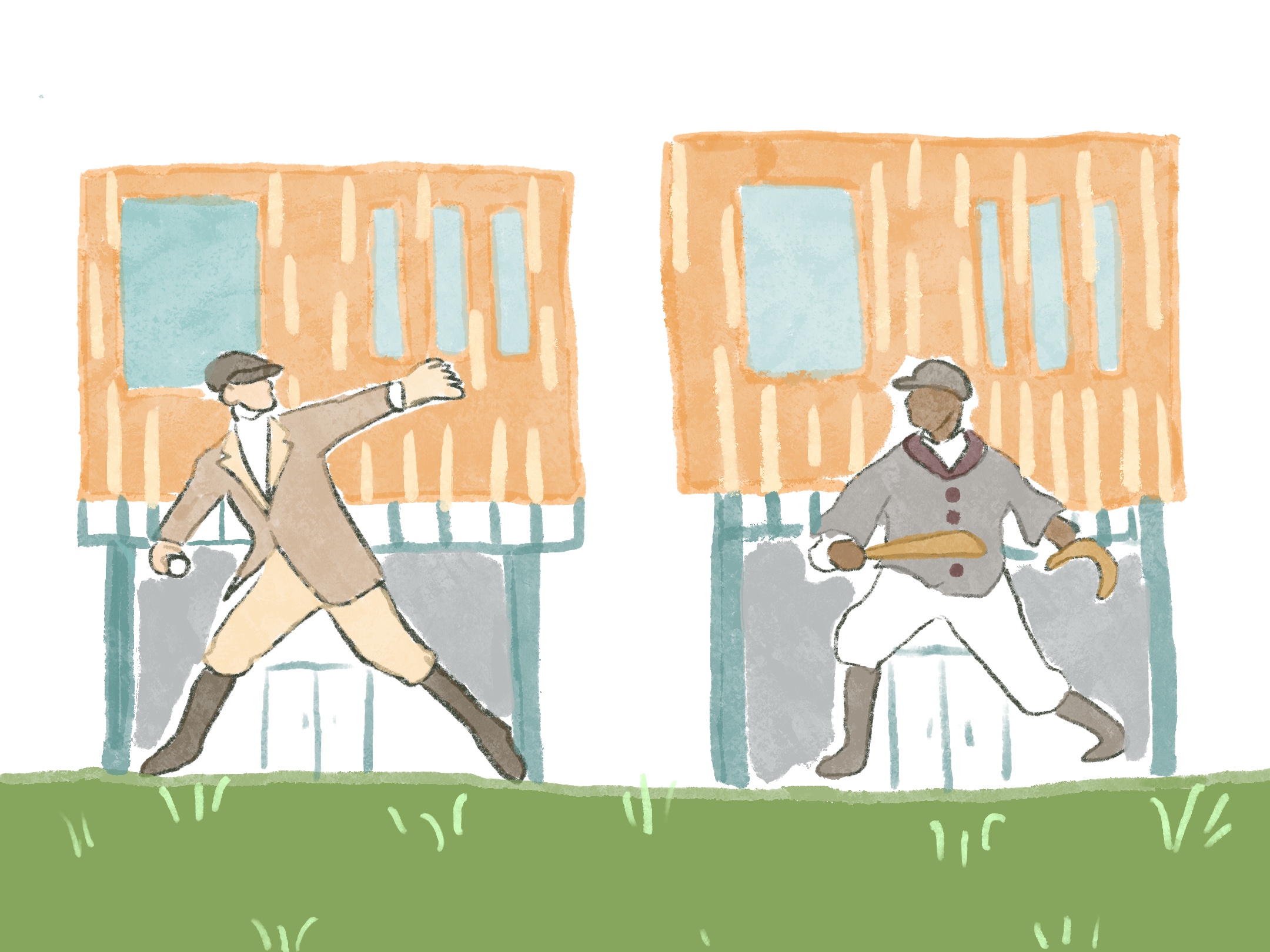Barnstorming baseball’s 1981 return to Erindale Campus
Recalling the legacy of baseball’s “Negro leagues” with Canada’s premier baseball historian, Bill Humber.
Long before the UTM tri-campus soccer team called South Field its home, before the Toronto Argonauts ripped through its grass with their long-metal studs, back when we had plenty of deer and fields but no Deerfield Hall, a friendly game of baseball took place on campus grounds. But it wasn’t between UTM students, or even alumni, but instead between some of Canadian baseball’s most prominent historians and a group of black baseball players that had once played a role in reshaping the history of their sport.
The year was 1981, and the Society for American Baseball Research (SABR) had just selected the University of Toronto’s Erindale campus to host its 11th annual conference and its first outside the United States. Nearly 150 attendants appeared at the event, including John Thorn, current Official Historian of Major League Baseball (MLB), as well as William “Bill” Humber, a 2021 Order of Canada appointee and Canada’s so-called “premier baseball historian.” In fact, it was Humber himself who had helped select Erindale campus as the venue for SABR’s Toronto convention.
“There were a number of firsts at the event,” recalled Humber. “John Thorn, who is now the official historian of MLB… said that was the first ever event he’d been to for the SABR.”
“The other fascinating thing was that we actually had four ball players that played in the Negro Leagues from the 1930s to early 40s. Two of them I remember quite well, Buddy Burbage and Gene Benson, and both of them played lengthy careers in the Negro Leagues. It was wonderful to have them there because most of those guys are gone now and there’s just not many firsthand memories, but they were able to share that with everybody who was there.”
The “Negro Leagues” referred to by Humber made up some of the most influential years for the development of Black youth sports programs in American history. Prior to desegregation, America’s favourite pastime was no less revered by the Black community as it was by their exclusionary contemporaries. After being barred from the MLB and its affiliations, African Americans began forming their own minor leagues in the late 1800s, providing the first opportunity for Black baseball players to develop and compete at a high level. By the 1920s, the Negro National League would establish itself as the most professional league to date with a reoccurring set of teams for multiple seasons.
Ironically, despite segregation prohibiting Black players from crossing into the all-white MLB, the opposite wasn’t always true. In 1979, John Craig, another attendee of the Erindale SABR convention, turned his own playing career into an autobiography. His story, Chappie and Me, spoke of his time as a white first-baseman in an all-black team under a mask of shoe polish.
“Some of the Negro league players that were there questioned the authenticity of the story,” chuckled Humber. “But I also know in Saskatchewan there was also a white ball player that played on a black barnstorming team and that is completely and totally historically verifiable and he’s in fact now in the Saskatchewan Baseball Hall of Fame.”
From the 1930s to the 1940s. The Negro major leagues — and all their barnstorming minor teams — continued growing in popularity and creating household legends. In 1947, Jackie Robinson broke baseball’s colour barrier, ushering in the racial integration of organized baseball and effectively putting an end to the Negro Leagues.
“Just the fact that the best players of the Negro Leagues, be it Hank Aaron or Willie Mayes, or in this case Jackie Robinson, were making it into the majors by the late 40s early 50s, the economic opportunities associated with a separate Negro Leagues disappeared,” explained Humber. “And the Major League was not very kind in terms of rewarding those leagues when they would come in and take their players,” he continued, referring to the alleged transfer fee of Jackie Robinson for only $5,000 by the MLB’s Brooklyn Dodgers.
Baseball’s Negro League era demonstrates the evolution of a culture just as much as the evolution of a sport. In recent years, baseball historians have made efforts to recognize those who helped define the Negro Leagues and their impacts on baseball. John Thorn was one such historian, and was recently consulted by MLB to honour 32 former black players who have had the greatest impact on the history of American baseball.
Humber looks back fondly of his time with the former Negro League players at the Erindale conference. “From our point of view, it was this fascinating opportunity to meet, in person, guys who had played in the Negro Leagues. I mean, the Negro Leagues had basically disappeared by the late 1940s because of the gradual integration of MLB.”
“Some of them ironically had probably only been to Canada before as players for barnstorming Negro league teams! So for some of these guys, coming back to Toronto in 1981 was a return to somewhere they hadn’t been in maybe 40 years. It was wonderful to have them there.”In the end, while Simon and Garfunkel’s classic Mrs. Robinson sang for the return of Joe DiMaggio and Yankees fans told campfire stories of Babe Ruth’s bat, Black America had the pitching of Satchell Paige to mythologize. And while we might not know just how far exactly Josh Gibson’s legendary homerun of 1936 may have went, we do have his legacy, and for now, that’s what really counts.
Sports & Health Editor (Volume 51) — Joseph is a recent graduate from UTM, having double-majored in Professional Writing & Communication and Political Science. During his time at UTM, he played on the men’s hockey and soccer teams and was actively involved in the campus’ sports community. Joseph is a strong advocate for a healthy lifestyle, and hopes that as Sports & Health Editor he can encourage students to get involved in campus sports and activities.

